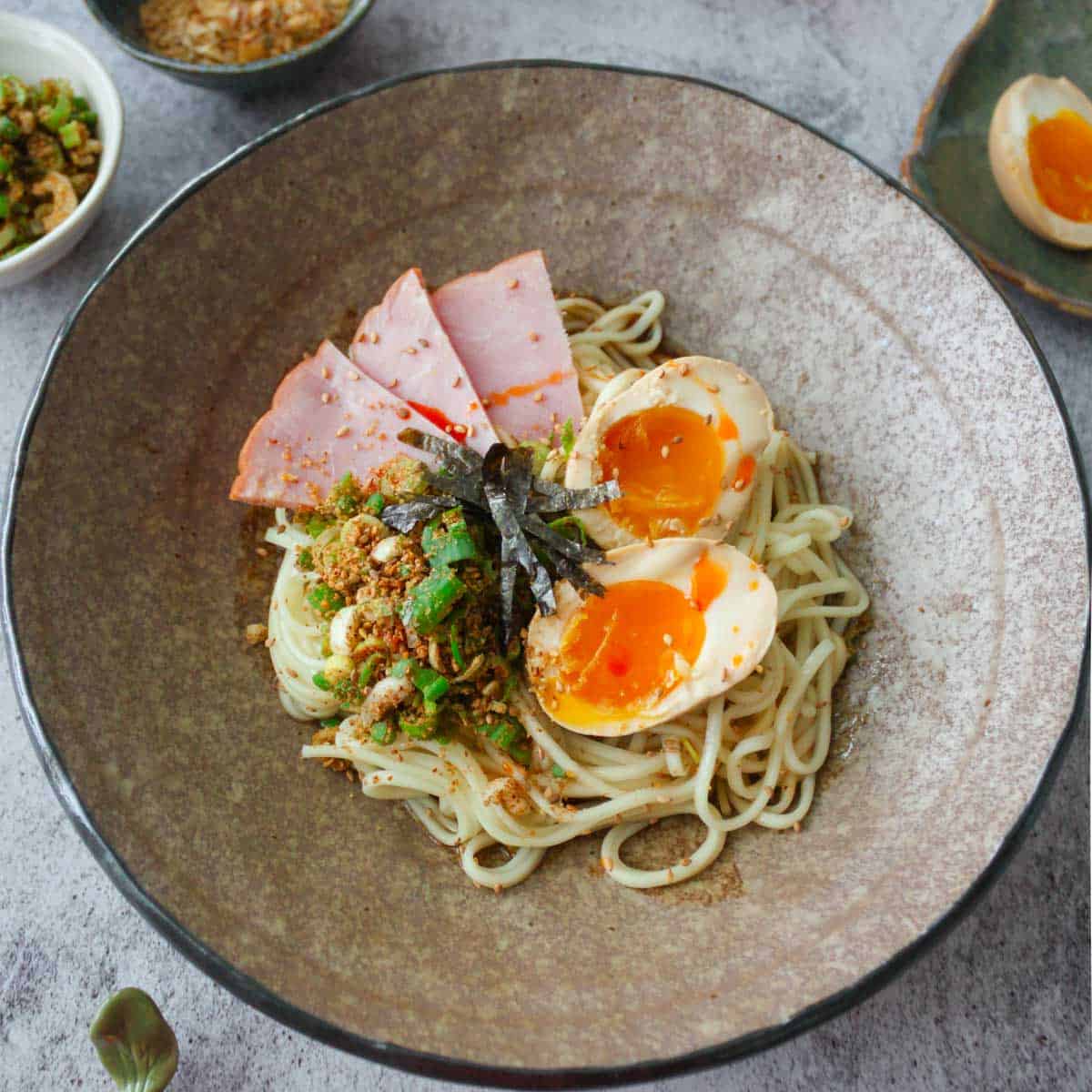Ingredients
Method
- Start by boiling water in a large pot.
- Make the bonito powder: Add ½ cup bonito flakes to a microwavable bowl and heat for 1 minute until they dry out. Rub them with your hands to turn them into powder. Set aside.
- Make the scallions and sesame mix: Pulse ¼ cup toasted white sesame seeds in a food processor until finely ground. Then stir in ¼ cup minced scallions with a spoon. Try to mince the scallions as finely as you can so they blend nicely with the noodles. Set that aside for now.
- Make the sauce: Mix 2.5 tablespoons oyster sauce, 1 tablespoon rice vinegar, and 1 tablespoon sesame oil. Divide the sauce into bowls and add 1 teaspoon of bonito powder to each.
- Prepare the toppings: Get your toppings ready—whatever you like!
- Boil the noodles: Once the water is boiling, cook 2 bundles Chinese noodles as per the package instructions. Drain them when done.
- Assemble: Divide the noodles into bowls, add your favorite toppings, and dig in while it’s hot (see Note 4)! Feel free to switch up the flavors as you go. If you're into sour like I am, try adding ½ to 1 teaspoon (or more!) of vinegar while you eat. Craving some heat? Add a little ra-yu or chili crisp. Have fun with the toppings and mix things up—perfect for when you want a little variety 🙂
Notes
- (Note 1) Chinese noodles: I used about 3.5 ounces (100g) of noodles per serving, so adjust the sauce based on how many noodles you’re using. And definitely go for thick, fresh noodles—this dish is all about that chewy texture!
- (Note 2) Ajitama (ramen egg): If you want to make ajitama (ramen egg), check out my not-too-salty ajitama recipe!
- (Note 3) Toppings: Abura soba is all about customization, so feel free to get creative with toppings like nori, menma, chashu, Japanese mayo, parmesan, and more. You can even add garlic paste, yuzu kosho, chili oil, or chili crisps for extra flavor!
- (Note 4) How to Eat: To enjoy abura soba the traditional way, mix the dressing and noodles while they’re hot, then add vinegar, chili oil, or any toppings you like as you eat. And remember—eat it while it’s hot!
- Sauce: Keep it in an airtight container in the fridge, and it'll stay good for 3–4 days.
- Cooked Noodles: Best to eat them fresh—storing them will just make them soggy.
- Bonito Powder: Store it in an airtight container in the fridge, and it’ll last up to a week.
- Scallion & Sesame Mix: This will stay fresh for 1–2 days in the fridge, sealed in an airtight container.
